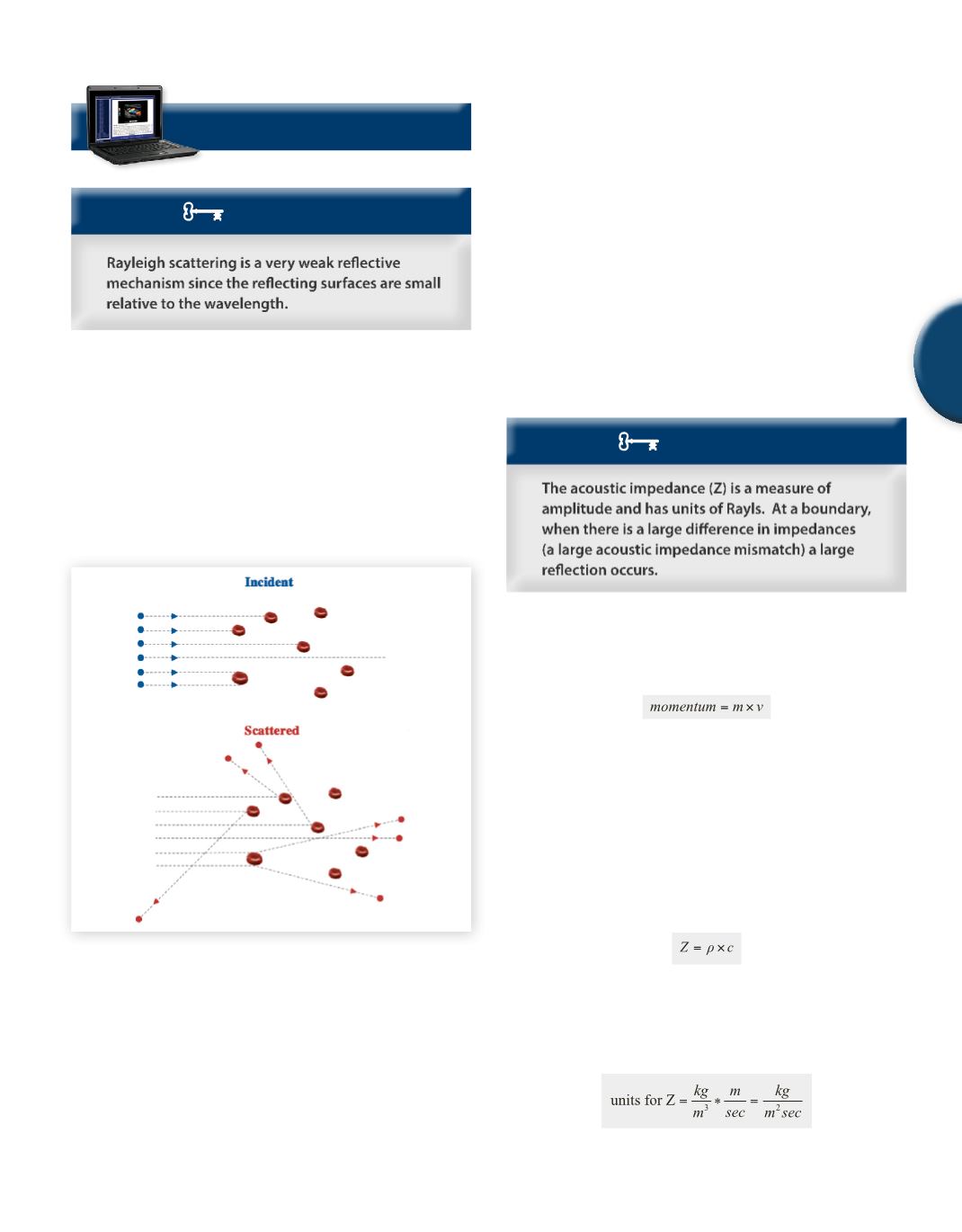
Chapter 3: Attenuation
47
3
VIEW ONLINE ANIMATION AND IMAGE LIBRARY
KEY CONCEPT
Rayleigh Scattering
Rayleigh scattering occurs when reflecting structures are very small
with respect to the wavelength. Since the wavelength depends on the
frequency, Rayleigh scattering is also frequency dependent. As the
frequency of the wave increases, the wavelength decreases, making
the structure look effectively larger. As a result, Rayleigh scattering
increases with increasing frequency. Some common examples of
Rayleigh scattering are light off the air molecules in the atmosphere
and sound reflecting from red blood cells (RBCs).
Fig. 10
Rayleigh scattering
3.2 Acoustic Aspects of Reflection
If we return to our definition of a sound wave as a transfer of energy
throughmechanical interaction,we will discover the foundation for
understanding reflection, based on the acoustic parameters of the
mediums. Recall that energy transfers as molecules are imparted
with energy,causing compression. In this description,nomention is
made of varying particle sizes or varying density in the undisturbed
medium. Therefore,there is a tacit assumption that all of the particles
are similar in size and the density uniform. The question is, what
would happen if that assumption were not true?
Momentum Analogy
Imagine that you are playingmarbles. Consider the difference when
you roll a small marble at a very large marble (an aggie), versus roll-
ing a small marble at another small marble. We will assume that you
are a very good shot and can hit the target marble head on.
When the twomarbles are of similar size,there is a significant trans-
fer of energy from the rolledmarble into the stationary marble. The
result is that most of the momentumwill be transferred to the small
stationary marble and it will begin to roll. In comparison,when the
small marble collides with the much larger marble,the large marble
barely moves, but the small marble strongly reflects.
KEY CONCEPT
Defining the Acoustic Impedance
In physics, the momentum is determined by multiplying the mass of
an object by its velocity, or:
For molecules of a medium being mechanically displaced through
wave propagation, we will replace the velocity of the marble with
the velocity of the wave, c. Instead of referring to the mass of the
marble,we will refer to the density of themolecules,
ρ
. Now the“mo-
mentum” transfer for a sound wave propagating through a medium
will be related to the density times the propagation velocity. This
term is given the name “acoustic impedance” denoted by the letter
Z. Therefore, the acoustic impedance of a material is defined as:
The units for the acoustic impedance can be simply determined by
multiplying the units for density (mass per volume) with the units
for the propagation velocity (distance per time).
SAMPLE PAGE


